#jan sardi
Explore tagged Tumblr posts
Text

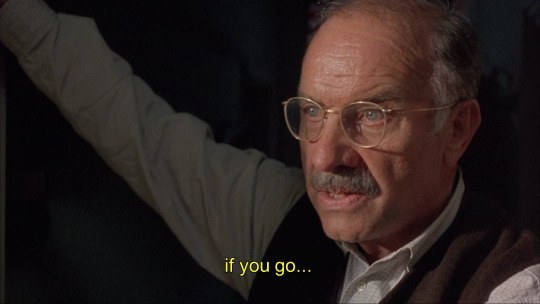
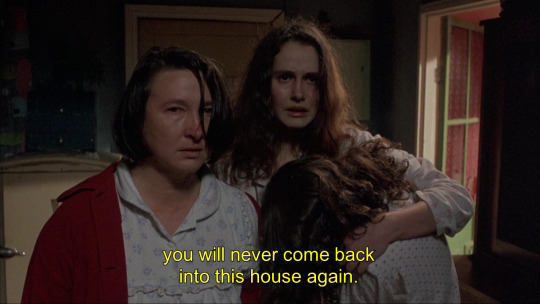



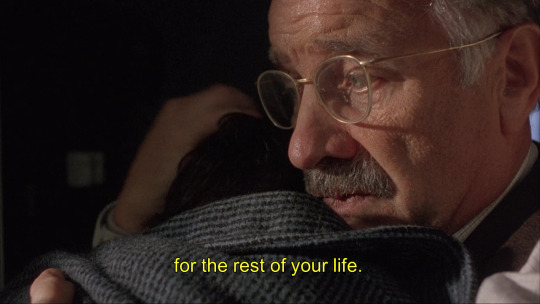

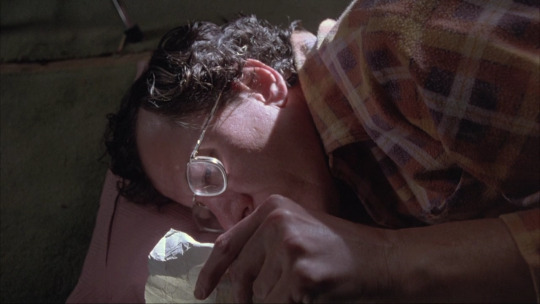
Shine, 1996
#biography#drama#music#shine#scott hicks#jan sardi#geoffrey rush#armin mueller-stahl#noah taylor#damnation
9 notes
·
View notes
Text

Leaving Sardi's, Ingrid Bergman walked into a crowd of fans and photographers, January 20, 1957. She was in town to accept the Best Actress Award of the New York Film Critics for her work in Anastasia.
Photo: Marty Lederhandler for the AP
#vintage New York#1950s#Marti Lederhandler#Ingrid Bergman#fans#Jan. 20#20 Jan.#crowd of fans#actress and fans#Sardi's
46 notes
·
View notes
Text
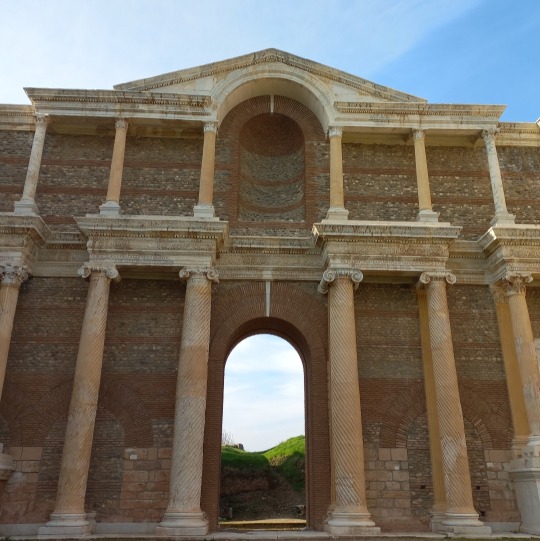
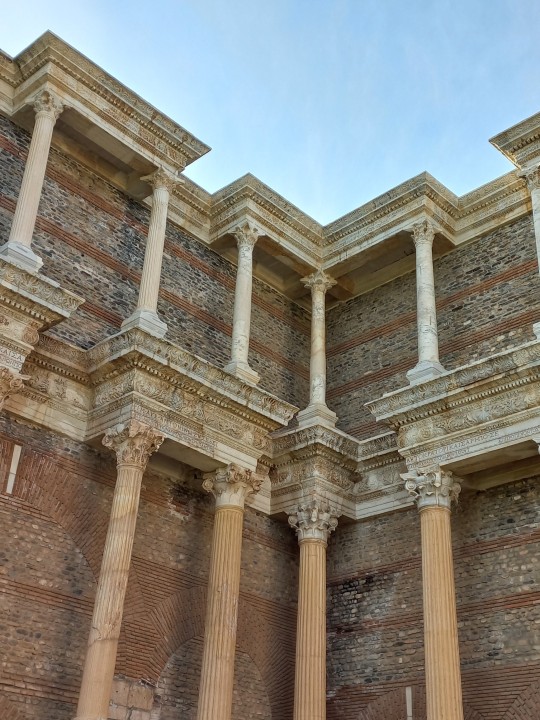
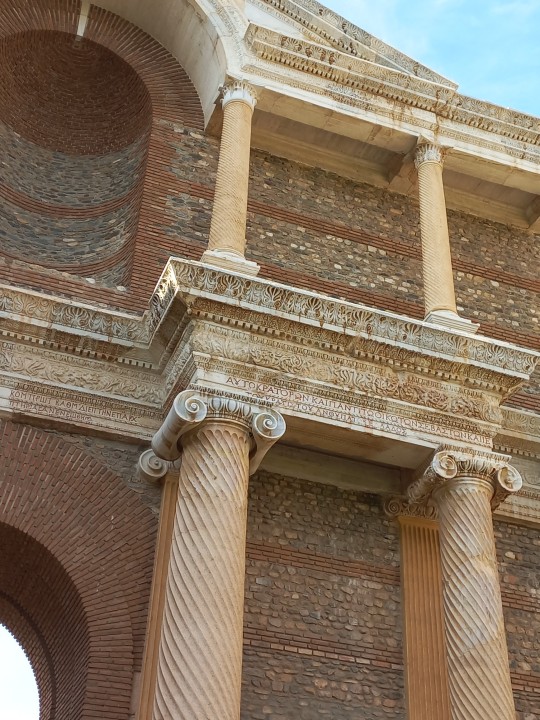


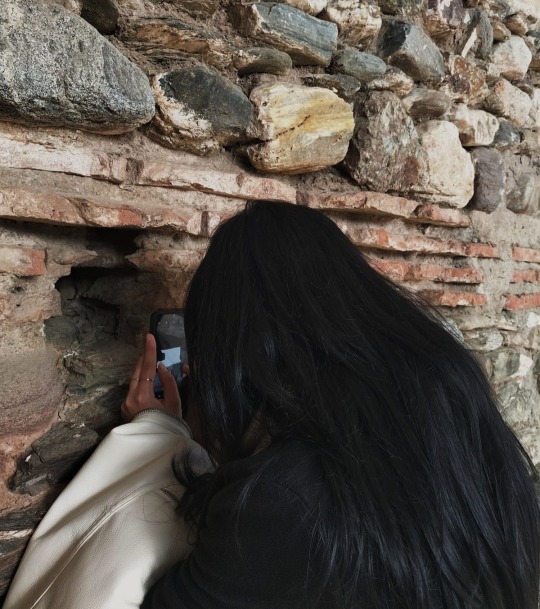
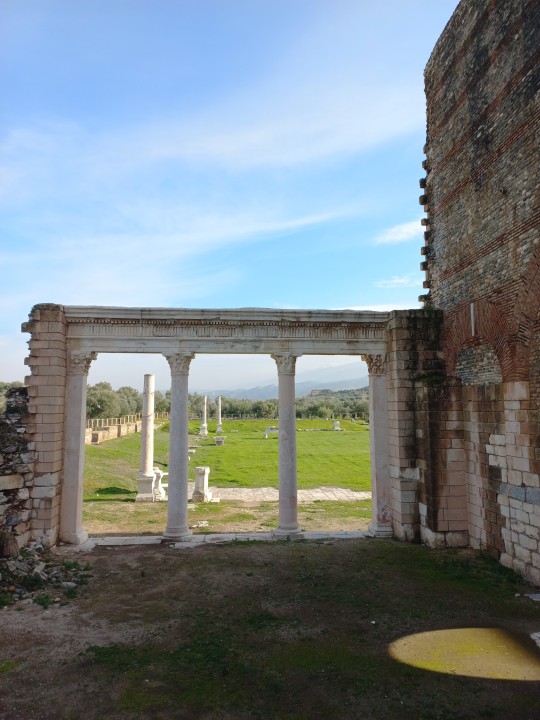
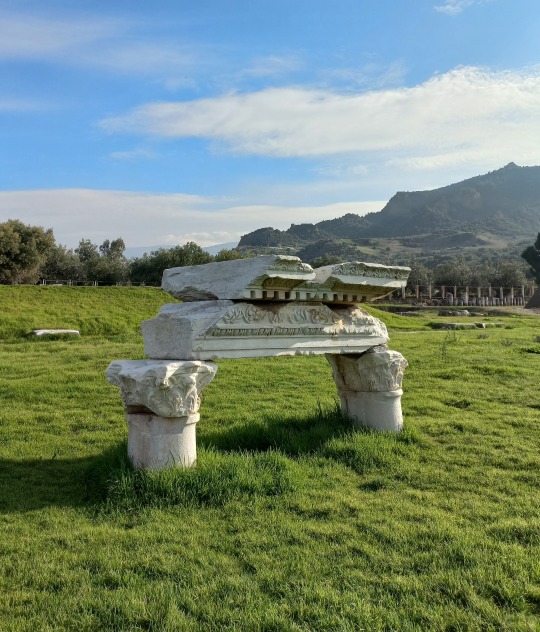
Sat, Jan 12 - I visited the ancient Roman city of Sardes today for the first time. (Information about the city is under this post.) It consisted of the Gymnasium with the remains of many Byzantine shops including restaurants and painting shops, a public pool, tombs, and a Synagogue. It was truly refreshing to see the place overall, but what I adored about the visit was the fact that you could imagine and experience the feeling of what it was like to be living in an ancient city, as it was empty because of the weather conditions. No voices, no noise, no motion, just the smell and the air of this ancient place. (I bet Henry Winter would die for it.) The Temple of Artemis was also close and I went there as well. I'll publish the pictures from the Synagogue and the Temple next if you want to check them out.
Sardis (/ˈsɑːrdɪs/ SAR-diss) or Sardes (/ˈsɑːrdiːs/SAR-de ess; Lydian: 𐤳𐤱𐤠𐤭𐤣, romanized: Sfard; Ancient Greek: Σάρδεις, romanized: Sárdeis; Old Persian: Sparda) was an ancient city best known as the capital of the Lydian Empire. After the fall of the Lydian Empire, it became the capital of the Persian satrapy of Lydia and later a major center of Hellenistic and Byzantine culture. It is now an active archaeological site in modern-day Turkey, in Manisa Province near Sart.
In 334 BC, Sardis was conquered by Alexander the Great. The city was surrendered without a fight, the local satrap having been killed during the Persian defeat at Granikos. After taking power, Alexander restored earlier Lydian customs and laws. For the next two centuries, the city passed between Hellenistic rulers including Antigonus Monophthalmos, Lysimachus, the Seleucids, and the Attalids. It was besieged by Seleucus I in 281 BC and by Antiochus III in 215-213 BC, but neither succeeded at breaching the acropolis, regarded as the strongest fortified place in the world. The city sometimes served as a royal residence, but was itself governed by an assembly.
In this era, the city took on a strong Greek character. The Greek language replaced the Lydian language in most inscriptions, and major buildings were constructed in Greek architectural styles to meet the needs of Greek cultural institutions. These new buildings included a prytaneion, gymnasium, theater, hippodrome, and the massive Temple of Artemis still visible to modern visitors. Jews were settled at Sardis by the Hellenistic king Antiochos III, where they built the Sardis Synagogue and formed a community that continued for much of Late Antiquity.
In 129 BC, Sardis passed to the Romans, under whom it continued its prosperity and political importance as part of the province of Asia. The city received three neocorate honors and was granted ten million sesterces as well as a temporary tax exemption to help it recover after a devastating earthquake in 17 AD.
Sardis had an early Christian community and is referred to in the New Testament as one of the seven churches of Asia. In the Book of Revelation, Jesus refers to Sardians as not finishing what they started, being about image rather than substance.
I take the pictures that are on my blog myself. In case you're interested in this post, I also post/reblog content including travel/cultural pictures, books, book recommendations, analysis, quotes, anything related to movies, series, and girl blog entries.
#sardes#ancient rome#ancient greek#gymnasium#ancient history#ancientmonuments#roman architecture#archeology#blog#travel#history#the secret history#henry winter#synagogue#dark academia#aesthetic#light academia#books#girlblogging#hellenistic#reading#if we were villains
44 notes
·
View notes
Text
Roads and Traveling

By JimChampion - Own work, CC BY-SA 4.0, https://commons.wikimedia.org/w/index.php?curid=135565344
Roads and pathways go back very far in human history, to about 10,000 BCE. Some of these might have started out as animal trails that were then used over and over, widening until they left their marks on the landscape, some were engineered and covered over by paving or logs. Some are blended with rivers to make travel faster and able to carry more and some were dictated by rulers of empires. Some are nothing more than sunken paths now, some are still in use.

By Adam37 - Own work, CC BY-SA 3.0, https://commons.wikimedia.org/w/index.php?curid=19961082
The oldest extant roads are sunken paths, many of which can be found in England as there is a tradition of maintaining public rights of way. Many of these paths connect farms to each other and also cross the country to reach important locations, such as temples and cities. One of the oldest of these is Harrow Way, or the Old Way, which connected what is now Seaton in Devon to Dover in Kent. The Old Way can be dated to somewhere between 600-450 BCE, but is believed to much older, going back into the Stone Age.

By John M, CC BY-SA 2.0, https://commons.wikimedia.org/w/index.php?curid=15868070
Roads that are paved with with wood can come in two types, corduroy roads that are made of logs laid across the roadway, especially across areas that tend to get extremely wet, like low lying areas and swamps. Plank roads are a newer take on that concept made with planks instead of whole logs. One of the oldest wood roads that still exists is the Corlea Trackway in Ireland, which dates to about 148 BCE and is the largest one found in Europe.

By Original creator: MossmapsCorrections according to Oxford Atlas of World History 2002, The Times Atlas of World History (1989), Philip's Atlas of World History (1999) by पाटलिपुत्र (talk) - This file was derived from: The Achaemenid Empire at its Greatest Extent.jpg, CC BY-SA 4.0, https://commons.wikimedia.org/w/index.php?curid=73745174
Darius I (Darius the Great) of the Achaemenid empire, who reigned from 522-486 BCE had the Royal Road build during his reign. Some parts of it appear to follow that of the Assyrian kings, who reigned from the 21st-7th century BCE, beginning with a city-state and gradually expanding into an empire, based on the eastern parts of the roadway seeming to connect points that were important to them rather than taking the most direct or easiest path. Darius did improve the roads, though, which were later improved by the Romans. It was expected that mounted couriers were expected to traverse the 2,699 km (1,677 miles) journey from Susa to Sardis in 9 days, a trip that took 90 days by foot, or approximately 30 hours by vehicle today. It was primarily a 'post road', or one that was used to transport mail rather than the mass transportation of people and goods.

By No machine-readable author provided. Jan Kronsell assumed (based on copyright claims). - No machine-readable source provided. Own work assumed (based on copyright claims)., Public Domain, https://commons.wikimedia.org/w/index.php?curid=781888
In the Americas, many trails were blazed, or marked so that others could follow, quite early in history, possibly beginning by following ridge lines or large game animal paths, which followed dry ground through the forests between grazing lands and salt licks. One of the largest still extant of these trails is the Natchez Trace, or the Old Natchez Trace between Nashville, Tennessee and Natchez Mississippi and linking the Cumberland, Tennessee, and Mississippi Rivers, spanning 710 km (440 miles). Many of the trails were co-opted by European colonizers to explore and expand through the continent.

By Manco Capac - self-made from the images on this and this and this pages and mainly from the image in the book Inca Road System by John Hyslop., CC BY-SA 3.0, https://commons.wikimedia.org/w/index.php?curid=3878163
The Inca road system was the most vast and advanced transportation system in the Americas. It consisted of many paved roads, two major north-south routes with many branches cut into mountainous territory the Inca ruled over in the Andes, and around 39,900 km (24,800 miles) of roads. The best known part of this road system is the Trail to Machu Picchu. Parts of the road systems were built by cultures that lived in the areas before the Inca ruled over the area, especially the Wari culture, who lived there from about 500-1000 CE.

By DS28 - File:Roman Empire 125 general map.SVG, CC BY-SA 4.0, https://commons.wikimedia.org/w/index.php?curid=68002775
The Roman roads, perhaps the best known early roads, were built from about 300 BCE through the fall of the Western Roman Empire, about 400 CE. They were standardized, those standards laid down in the Law of the Twelve Tables from about 450 BCE, to 8 Roman feet (~2.37m) wide, double that around curves. In rural areas, the width was 12 Roman feet, allowing two standard width carts to pass by and allow for pedestrian traffic to continue on without interference. These tables also required private landowners to allow travelers to use their land if the roads were in disrepair, so durable roads became a very important consideration, as well as making them straight to use the least amount of materials. At its peak, the Roman roads consisted of at least 29 great military highways radiating from Rome, 327 great roads that connected provinces, and many smaller roads that comprised more than 400,000 km (260.000 miles), with over 80,500 km (50,000 miles) stone paved. Many of these are still used, being paved over with modern roads.


By Whole_world_-land_and_oceans_12000.jpg: NASA/Goddard Space Flight Centerderivative work: Splette (talk) - Whole_world-_land_and_oceans_12000.jpg, Public Domain, https://commons.wikimedia.org/w/index.php?curid=10449197 and By Nekitarc - Own work, CC BY-SA 4.0, https://commons.wikimedia.org/w/index.php?curid=43114716
In China, many roads were dedicated to trade routes like the Silk Road, which began in the Han Dynasty (207 BCE-220 CE). They focused primarily on the safety of the route to make it as lucrative as it could be, so major projects like extending the Great Wall of China, which was started during the 7th century BCE, were undertaken. The Silk Road shortened the Eurasian Steppe trail, which had been used for about 2000 years, from 10,000 km (6,200 miles) to 6,400 km (4,000 miles). Other roads in China that are worth noting are the Gallery Roads through remote mountains that are made of wooden planks secured to holes drilled into cliff sides in the Qin Mountains, which were built starting around the 4th century BCE and are still in use.
4 notes
·
View notes
Text
Bernadette Peters in Caricature
I am so behind, so we're just going to plow right through these. Bernadette has not one, not two, not six, but eleven Hirschfelds, more than any other Diva left.
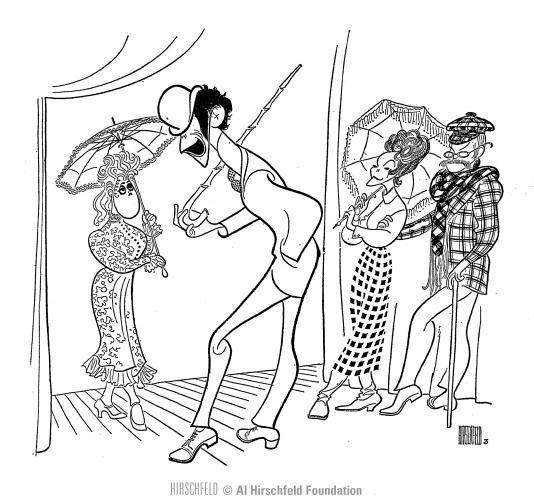
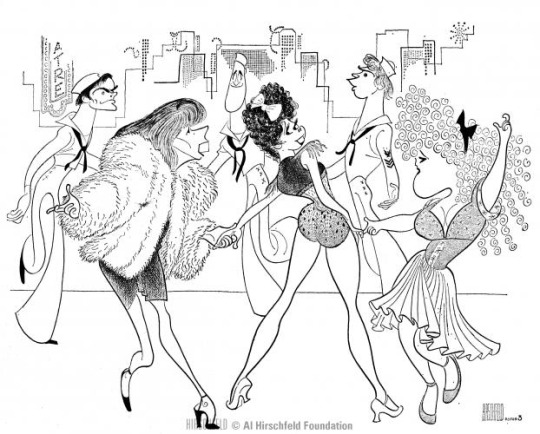
George M! With Joel Grey, Bernadette Peters, Nanette Fabray, Jack Cassidy - Tv Special 9/6/70
On The Town- Bernadette Peters, Phyllis Newman, Donna Mckechnie, Jess Richards, Remak Ramsay, Ron Husman. (10/31/71)

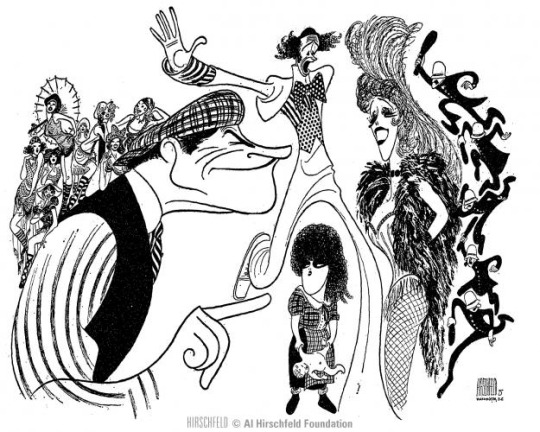
“Seven Sparklers In Fall Firmament”(Clockwise From Top Right) Peter Firth In Equus; Angela Lansbury In Gypsy, Gerladine Page, Richard Kiley And Sandy Dennis In Absurd Person Singular; Ben Gazzara In Hughie; Maureen Stapleton, Jack Lemmon, And Walter Matthau In Juno & The Paycock, Robert Preston And Bernadette Peters In Mack & Mabel; And Charlton Heston In Macbeth, 1974
Mack And Mabel With Robert Preston, Bernadette Peters, Lisa Kirk, And Robert Fitch, 10/6/74
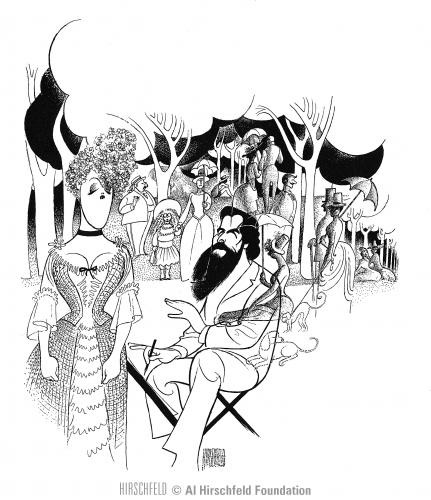

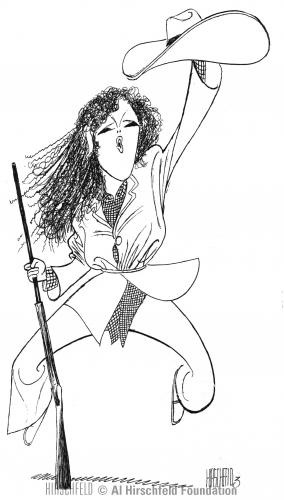
Sunday In The Park With George, Bernadette Peters And Mandy Patinkin, 1984
Bernadette Peters In Sunday In The Park With George (6/8/84)
Bernadette Peters In Annie Get Your Gun (2/28/99)


Into The Woods With Joanna Gleason, Robert Westenberg, Tom Aldredge, Bernadette Peters, Barbara Byrne, And Chip Zien, 11/1/87
The Goodbye Girl: Carol Woods, Tammy Minoff, John Christopher Jones, Martin Short, Bernadette Peters (2/28/93)
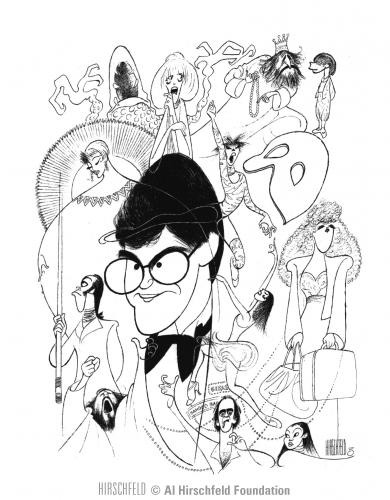
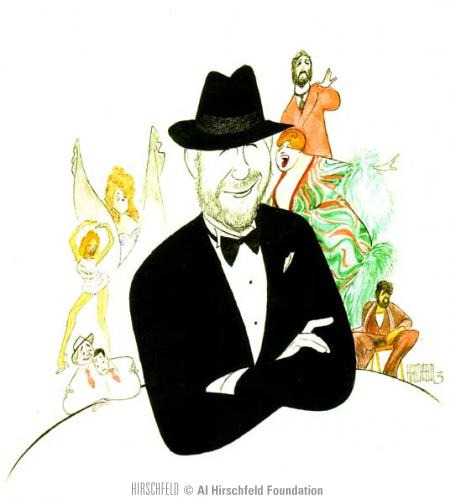
Cameron Mackintosh With Characters From Shows He Has Produced. Last Revised 4/92
Rick Steiner With Characters From Six Of His Plays, Ink And Goauche 9/02
Bernadette also has a portrait at Sardi's, but heaven knows I can't find it just by googling, and it's not a week to ask me to do deep dives like I usually do. Check back in three-to-five business days.
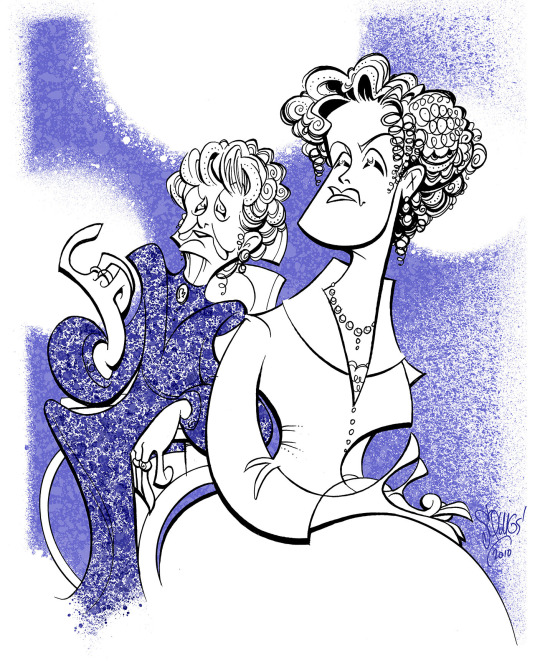

Elaine Stritch and Bernadette Peters in "A Little Night Music," 2010 - Squigs
Bernadette Peters and the new company of Hello, Dolly! 2018 - Squigs


Bernadette Peters, Joanna Gleason (my beloved), and the company of Into the Woods, 2014 - Squigs
Bernadette Peters, Jan Maxwell (my beloved), Jayne Houdyshell, Mary Beth Peil, and the company of Follies, 2011 - Squigs
7 notes
·
View notes
Note
when do you think we'll hear from Van?
I initially thought March but there’s a lot going on behind the scenes so February is possible.
22nd Jan - Eleven Management finally put CATB on their roster. Idk if this is the exact day it happened but I noticed it that day.
24th Jan - Sardy teased that Van got a haircut so maybe Van needs to look more presentable for business. 👀
1st Feb - CATB’s Spotify R&L 2021 playlist was posted.
Perhaps more things will happen but it’s the little things that make it seem like they’re getting ready for something. When do you think we’ll hear from Van? 👀
5 notes
·
View notes
Text
Bener tiang ningalin rambutne buka carang punyan kayune . Willow ngigel ring udara sadurung nutupin tiang Ring sor kapas miwah kaliko Ring duur kanopi dapple sane sampun sue Yakti tresna ring mundur punika wantah nangis titiang . Mangda suaran gergaji punika pastika kauningin olih punyan kayune . Kudu katebang mangda prasida nglawan dingin Tiang jejeh api nanging ento suba makelo Antuk suaran apine, keneh tiange menek ka cokorne . Sakadi abu abu sane panggihin titiang munggah ring panes . Tetep alus tur suci sakadi salju . Tiang sampun sue tresna ring api . Antuk sabilang tresna tiang ngelepasin, tiang tusing taen pateh Nonton akah sane kari idup kaajeng olih api . Tiang sampun kategul ring tangan ragane sane malakar antuk emas . Ngelebang sampah ring tresnan tiange sane sampun sue
درست کہ من آئی ءِ ریش چو درچک ءِ شاخ ءَ دیستگ اَنت . مناں پوشغ ئا شہ پیشا یک ولو یے ہوا سرا ناچ کنغیں کپاس ءُ کیلیکو ءِ چیر ءَ اوور کینپی ڈپل دیر پیشا درستیں کہ کشگ ءِ تہا مھر منی گریوگ ات کہ آرے ءِ توار ءَ درچک ءَ چہ زانگ بہ بیت . سردی ءِ ھلاپ ءَ جنگ ءِ ھاترا کٹگ المی اِنت من آتش ءِ سرا زھر اتاں بلے اے باز پیسر ات آتش ءِ گریوگ ءَ گوں منی دل پاد اتک چو کہ راھگوز ئے ھاک ءَ من گرم ءِ تہا چست بوھگ ءَ دیست برف ءِ وڑا نرم ءُ پاک ءُ پلگار بہ بئے من ءَ باز پیسر ءَ گوں آتش ءَ مھر بوتگ ہر مھر ئا گوں من شل کثہ، من کدی یک نہ اثاں انگت زندگیں جڑاں شعلہ ءِ وسیلہ ءَ ھلاس کنگ ءَ گندگ ءَ آں من تئی زِریں دست ءِ سرا مھکم اتاں دیر پیشا مئیں مہر ئا را گار کنغdrost kah man ái ay résh chu darchk ay shák á distag ant . manán pósheg aá shah péshá yak walu yay hwá sará nách kanegén kapás o kéliku ay chér á óór kénpi dhapal dir péshá drostén kah kashag ay tahá mahr mani gréwag át kah áré ay tawár á darchk á chah zánag bah bit . sardi ay haláp á jang ay hátrá kathag elmi ent man átsh ay sará zahr atán bale é báz pésar át átsh ay gréwag á gón mani del pád atk chu kah ráhgóz ay hák á man garm ay tahá chest bóhag á dist brep ay wadhá narm o pák o palgár bah bay man á báz pésar á gón átsh á mahr butag har mahr aá gón man shal ksh, man kadi yak nah ásán ángat zendagén jadhán shalah ay wasilah á halás kanag á gandag á án man tai zerén dast ay sará mahkam atán dir péshá maén mahr aá rá gár kaneg
Tiɲɛ don ko ne y’a kunsigi ye i n’a fɔ jiribolo Wilo dɔ bɛ dɔn kɛ fiɲɛ na sanni a ka n datugu Coton ni calicoes jukɔrɔ Over canopy dapple kabini tuma jan Tiɲɛ don ko kanuya min bɛ bɔli la, o tun ye ne ka kasi ye Ko sɔgɔsɔgɔninjɛ mankan ka kan ka dɔn jiri fɛ A ka kan ka tigɛ walasa ka nɛnɛ kɛlɛ Ne ye tasuma jɔrɔ nka o kɛra kabini tuma jan Tasuma mankan fɛ, ne dusukun wulila ka jɔ a sen kan I n’a fɔ n ye bɔgɔmugu buguri min ye, o wulila funteni na Aw bɛ sigi nɔgɔya la ani ka saniya i n’a fɔ nɛnɛ N ye tasuma kanu kabini tuma jan Ne ye kanuya kelen-kelen bɛɛ tigɛ ka bɔ, ne tun tɛ kelen ye abada K’a lajɛ jirisun ɲɛnamaw bɛ ka dun tasuma fɛ Ne tun sirilen bɛ i bolo sanuman na Laying waste to my lovin' kabini tuma jan
Ɔ ti su kɛ n wunnin i ti’n kɛ waka nɲa sa . Saule kun m’ɔ su si able aunmuan’n nun ka naan w’a kata min su’n . Fɔkɔ nin kaliko’m be bo lɔ . Ɔ ti dan kpa. Ɔ ti su kɛ klolɛ’n i nunnunlɛ’n yɛ ɔ ti min sunlɛ’n niɔn . Kɛ ɔ fata kɛ waka’n si nnɛn kpanngɔ’n i kpanlɛ’n . Ɔ fata kɛ be kpɛ waka naan b’a kwla kun arɛ’n . N fali sin sanngɛ i sɔ’n w’a cɛ kpa Sin’n i kpanlɛ’n ti’n, min awlɛn’n jrannin kekle . Kɛ aunɲan’n i aunɲan’n sa’n, n wunnin kɛ ɔ su jran lika’n i dolɛ’n nun . Ɔ tran ase blɛblɛblɛ, ɔ ti sanwun kɛ glaci sa. N kloli sin’n w’a cɛ kpa . Klolɛ kwlaa nga n kpɛli’n, m’an yoman kɛ laa’n sa le . Kɛ be nian waka’m be bo bolɛ nga be te o nguan nun’n, sin’n su di be’n . N jrannin ɔ sa sika ɔkwlɛ’n su . Ɔ fa min klolɛ’n i sacilɛ’n w’a cɛ kpa.
Tuhu maka kuidah bukna bagi ranting batang kayu . Sada willow si landek-landek i udara ope denga itutupi aku . I teruh kapas ras kaliko . Lebih kanopi dapple enggo ndekah . Tuhu maka kekelengen i bas penariken diri e me tangisku . Bahwa sora gergaji pasti ieteh batang kayu . Harus itebang guna ngelawan dingin . Kuganggu api tapi si e enggo ndekah Alu sora api si ergeruhguh, pusuhku nangkih ku nahena . Bagi abu abu si kuidah nangkih i bas panas . Tetap lembut ras murni bagi salju . Aku enggo ndekah jatuh cinta man api e . Alu tep-tep kekelengen si kupotong, la pernah aku seri . Ngenen akar si nggeluh denga ipangan api . Aku enggo tetap i bas tanndu si emas e . Membuang sampah man lovin 'ku ndekah
Tongon do huidah jambulanni songon ranting ni hayu Sada hayu willow manortor i udara paima manrungkub ahu I toruh ni kapas pakon kaliko I atas kanopi dapple dokah na salpu Tongon do holong na ibagas penarikan aima tangis-tangisku Ase sora ni gargaji ai maningon ibotoh humbani hayu ai Maningon itaba ase boi manlawan borgoh Huparsoalhon do apuy tapi domma dokah ai Marhitei sora ni apuy ai, jongjong ma uhurhu Songon abuan ni abuan huidah naik bani milas ni ari Marhusor ma lambok anjaha borsih songon salju Domma dokah ahu jatuh cinta bani apuy ai Bani ganup holong na hupadaoh, lang ongga be ahu songon na hinan Manonton urat na manggoluh ope ipangan apuy Ahu domma totap bani tanganmu omas Mansedahon holongku na dob dokah
0 notes
Text










Love's Brother (2004)
Directed by Jan Sardi
Cinematography by Andrew Lesnie
0 notes
Text
"The Notebook" is based on the 1996 novel of the same name by Nicholas Sparks. The 2004 movie was directed by Nick Cassavetes, from a screenplay by Jeremy Leven and Jan Sardi. In its current Broadway production, the book is by Bekah Brunstetter and the music and lyrics is by Ingrid Michaelson.
https://mail.onelink.me/107872968?pid=NativePlacement&c=Global_Acquisition_YMktg_315_EmailSignatureGrowth_YahooMail:Search,Organize,Conquer&af_sub1=Acquisition&af_sub2=Global_YMktg&af_sub3=&af_sub4=100000945&af_sub5=OrganizeConquer__Static_
View On WordPress
0 notes
Text
The Notebook. Theater Review.
Upload ImageEmbed VideoUnsplash image

Click to update image
"The Notebook" is based on the 1996 novel of the same name by Nicholas Sparks. The 2004 movie was directed by Nick Cassavetes, from a screenplay by Jeremy Leven and Jan Sardi. In its current Broadway production, the book is by Bekah Brunstetter and the music and lyrics is by Ingrid Michaelson.
The musical has two directors: four time Tony nominee Michael Greif and Schele Williams who is making a Broadway debut. Williams is also going to be directing the highly anticipated "The Wiz" which is opening in April.
In the current musical we get three Noah's and three Allie's... younger, middle and older. For the most part the six are good; I thought that the younger Allie (Jordan Tyson) was woefully miscast. Where Allie came from money, was a proper girl, this younger Allie ex-hued none of that. More like an inner city persona, Tyson was just not believable.
In Brett J. Banakis gorgeous set design we get a wonderful slide movement throughout the two hours fifteen minutes.Equally as effective is the sound by Nevin Steinberg and the costumes by Paloma Young. The effective orange and blue lighting by Ben Stanton too made the mood well in tune with the plot.
The musical for the most part was very similar to the movie, two young people fall deeply in love with one another and even though ten years has gone by, they never stop thinking of each other. The key to the musicals success is that the three different sets of Noah and Allie need to all be effective. Whereas Maryann Plunkett as the elder and Dorian Harewood as the husband are excellent, we get the best interaction between Joy Woods and Ryan Vasquez, the middle aged actors; their singing and body language is captivating. The two are silky smooth on stage! Even though John Cardoza holds up his end as the younger Noah, it is Tyson who is an anchor around his neck. Even though Tyson has a very good singing voice, her Broadway debut falls flat.
The two opening scenes, both first act and second act fire on all cylinders. It is the second act, however, where this show excels. The songs, the pace and the story all come together nicely. Songs like "We Have To Try", "Forever", "It's Not Easy", "I Know" and "Coda" were all well sung songs; the lyrics too were catchy and fit the moment of the plot. The first act too had some nice songs: "Time", "Leave The Light On", "If This Is Love" were most memorable. Having some great moments in the first act, it still didn't compare the the afternoons second act.
For the romantics out there, "The Notebook" is for the most part an entertaining show. The choreography (Katie Spelman) is underwhelming, as is some of the ensemble cast. Allie's parents: Andrea Burns and Charles E. Wallace are not moving in their parts. Burns was much more effective in her role as nurse Lori.Neither actor brought depth as parents to Allie, they were mostly robotic and aloof.
.....................................................................................................................
Next up is Water for Elephants at The Imperial Theatre. This musical is based on the circus and maybe a real sleeper when it comes a show that may just wow the audience.
Since many good shows have opened but unexpectedly closed in a rather quick fashion (Spamelot, Days of Wine and Roses, Shucked), this musical may surprise to the upside.
It seems that shows that aren't unanimously well received, and in Shucked case was, are closing with not spending much time on the great white way.
#Broadway Bob, #Tony Awards, #The Notebook, #New York City.
Words: 605
0 notes
Text








Shine, 1996
0 notes
Text
writer/director Jan Sardi talking about Giovanni Ribisi on the dvd commentary for Love's Brother (2004)
#“i just love the way that he eats his soup” he's just like me fr#all these directors take to the commentary booth to gush about my mans#also adam garcia apparently describing himself as a “slobbering giovanni ribisi fan” okay miss girl join the club#giovanni ribisi
1 note
·
View note
Text

#tumblr#black and white#love#quotes#the notebook#movies#relationship#memories#life#people#quote#gif#movie qoute#b&w#nicholas sparks#jan sardi#movie#movie scene#happiness#sadness#pain#always smile#she will be loved#loyalty#vintage#words#film#photography#photograph#passion
20 notes
·
View notes
Quote
If you are a bird, I am a bird.
Young Noah, The Notebook
#The Notebook#Ryan Gosling#Rachel McAdams#The Notebook movie#The Notebook movie quotes#movie quotes#quotes#quote of the day#quote#wordporn#Nick Cassavetes#Jeremy Leven#Nicholas Sparks#Jan Sardi
19 notes
·
View notes